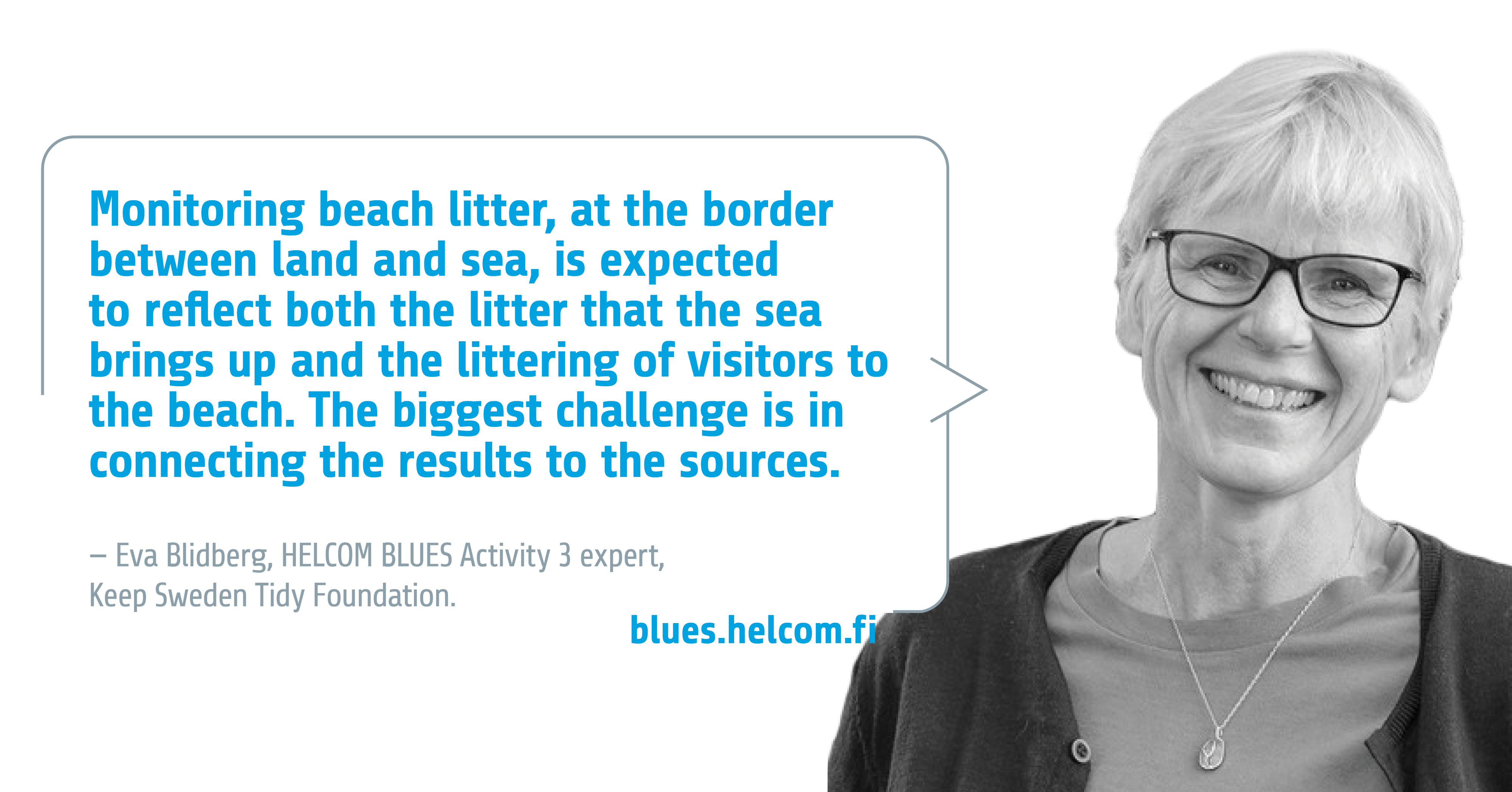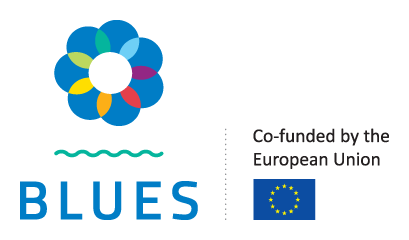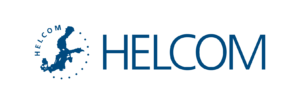
Eva Blidberg is working on HELCOM BLUES Activity 3 related to marine litter aspects, and more specific on beach litter. She has a PhD in marine ecotoxicology and has been working on marine litter issues for over ten years at Keep Sweden Tidy Foundation. For instance, she coordinates the national beach litter monitoring programme on behalf of the Swedish Agency for Marine and Water Management. She is also a member of the HELCOM Expert Group on Marine Litter (EG-Marine litter), the OSPAR Intersessional Correspondence Group on Marine Litter (ICG-ML), and the EU Technical Group on Marine Litter (TG-Litter).
What is your Activity/Task in HELCOM BLUES all about? What main challenges and/or pressures on the Baltic Sea does it try to solve?
As a subcontractor in the HELCOM BLUES project, my work is to execute an assessment of beach litter to show the current state in the Baltic Sea. The results will be used in the HOLAS III assessment.
Litter monitoring on beaches is a way of assessing the littering of our seas. The beach – which is the border between land and sea is expected to reflect both the litter that the sea brings up on the beach and the actual littering of visitors to the beach. Plastic litter items are the most common litter found and is of concern due to its long durability in nature. Furthermore, the opportunities to clean the sea are limited. The biggest challenge lies in connecting the results from the assessment to the sources that give rise to the litter. To follow up on trends and implement relevant measures in line with the HELCOM Regional Action Plan on Marine Litter are of greatest importance to reach a good environmental status.
What are the planned outcomes of your specific BLUES Activity/Task?
HELCOM BLUES Activity 3.1 will provide a common list of litter categories so that data registered in different lists can be used jointly or be compared with each other. In addition, an indicator report on beach litter based on the HELCOM Blues assessment will be developed by the co-leads for HELCOM Expert group on marine litter (i.e. by my colleague Jakob Strand and myself). It will present for example the median of litter items in relation to the threshold value, and how much of the litter items that are related to single-use plastics in the different subbasins. It will also tell what litter items that are most commonly found in the Baltic Sea.
How will your BLUES Activity/Task benefit your organization in particular and the Baltic Sea in general?
Keep Sweden Tidy is an NGO with the vision that no one litters. Our intention is that everything we do should be knowledge based. My work in the HELCOM BLUES project contribute to that and it gives me a more holistic understanding of the litter situation for the entire Baltic Sea. I also have learned a new statistics program which will be very useful in my future work.
I hope that with my work done in HELCOM BLUES, it will be even more clear that we need to work for a harmonisation of the beach litter monitoring programmes currently used in the countries around the Baltic Sea. In the long run it will benefit us all. Then, of course, I also hope that the results of the assessment contribute to both common and locally designed solutions against littering so that we can all enjoy a clean Baltic Sea in the future.

